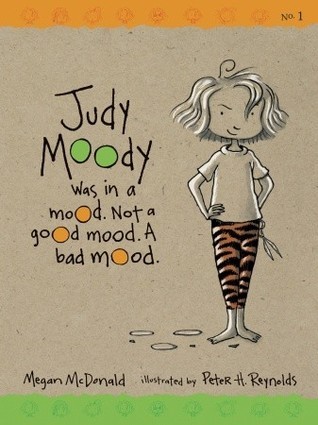Judy Moody Was in a Mood. Not a Good Mood. A Bad Mood. Book Summary
TL;DR
Judy Moody Was in a Mood introduces readers to Judy, a spirited third grader navigating her emotions and individuality, especially when challenged by a school project that allows her to express herself creatively.
What is Judy Moody Was in a Mood. Not a Good Mood. A Bad Mood. about
In this delightful children's book, Judy Moody embarks on her third-grade journey with reluctance, as she finds herself in a bad mood on the first day of school. Megan McDonald captures the essence of childhood emotions, illustrating how Judy struggles with her feelings about returning to school after summer. The narrative centers around a school assignment called the Me Project, which challenges Judy to explore her identity and interests. This opportunity becomes a turning point for her as she learns to embrace her unique personality and channel her mood into creativity. The collaboration with illustrator Peter H. Reynolds brings Judy's adventures to life, making the book a charming exploration of childhood angst and self-expression.
Judy Moody Was in a Mood. Not a Good Mood. A Bad Mood. 5 Key Takeaways
Judy Moody's Bad Mood
The story begins with Judy Moody starting third grade in an undeniably bad mood, feeling frustrated by the end of summer and the return to school.
The Me Project Assignment
Mr. Todd, Judy's teacher, assigns the class the Me Project, which prompts Judy to reflect on her identity and interests, offering her a chance to express herself.
Creating the Collage
As Judy works on her collage, she begins to open up about who she is, using this project as a means to channel her bad mood into something positive.
Embracing Individuality
Through the process, Judy learns to embrace her individuality, ultimately transforming her bad mood into a celebration of her unique traits and interests.
Resolution of Emotions
By the end of the book, Judy's mood shifts as she finds joy in her project and feels more confident in her identity, showcasing the importance of self-expression.
Judy Moody Was in a Mood. Not a Good Mood. A Bad Mood. Videos
JUDY MOODY WAS IN A MOOD Chapter 1 Read Aloud - YouTube
Top Judy Moody Was in a Mood. Not a Good Mood. A Bad Mood. Quotes
- "Not a good mood. A bad mood. A mad-faced mood."
- "Judy Moody's mood is a rollercoaster of emotions, but it leads her to discover the power of self-expression."
Who should read Judy Moody Was in a Mood. Not a Good Mood. A Bad Mood.?
This book is ideal for young readers, particularly those in early elementary school. It resonates with children who navigate their own feelings and those who appreciate stories about individuality and creativity. Parents and educators can use it as a tool to discuss emotions and self-identity with children.
Judy Moody Was in a Mood. Not a Good Mood. A Bad Mood. Best Reviews
- "A wonderfully relatable tale that captures the ups and downs of childhood." - School Library Journal
- "Megan McDonald’s writing resonates with kids, and Reynolds’ illustrations perfectly complement Judy's emotional journey." - Publishers Weekly
People also liked these summaries
Judy Moody Was in a Mood. Not a Good Mood. A Bad Mood. FAQs
What age group is Judy Moody Was in a Mood suitable for?
This book is best suited for children aged 6 to 9, particularly those transitioning into early elementary school.
How does Judy Moody's character develop throughout the book?
Judy's character evolves from a moody and frustrated child to one who embraces her individuality and channels her emotions into creativity through the Me Project.
Is Judy Moody part of a series?
Yes, Judy Moody Was in a Mood is the first book in a series that follows Judy's various adventures and challenges throughout her childhood.
